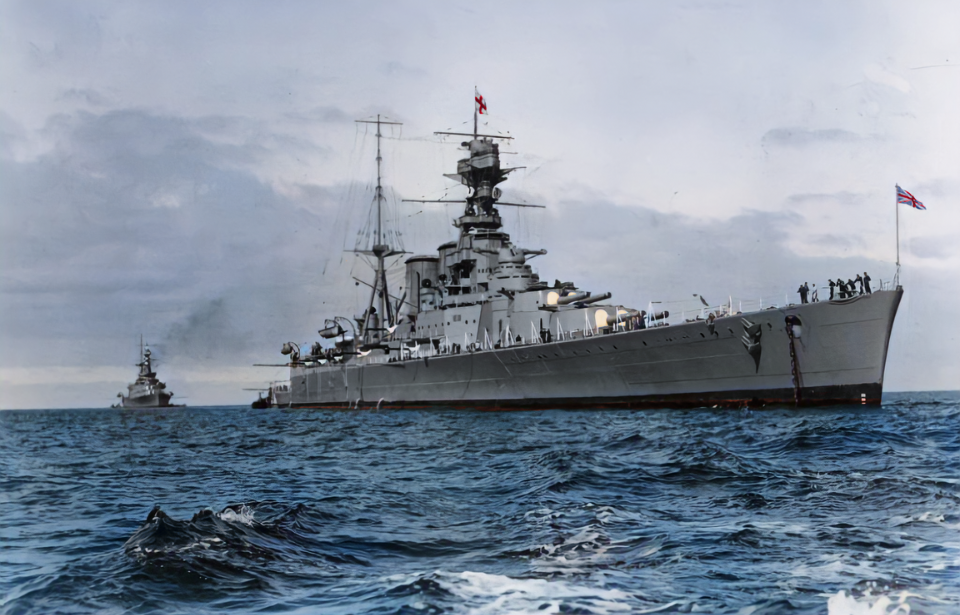The HMS Hood (51), nicknamed the “Mighty Hood,” was the pride of the British Royal Navy, embodying the pinnacle of warship design in the early 20th century. With her imposing silhouette and formidable firepower, the battlecruiser was once a symbol of the Empire’s naval dominance, patrolling the high seas with an aura of invincibility.
However, Hood‘s story isn’t just one of glory and triumph. Her fate during the Second World War marked a turning point in naval warfare, highlighting the vulnerabilities of even the most seemingly invincible ships.
Construction of the HMS Hood
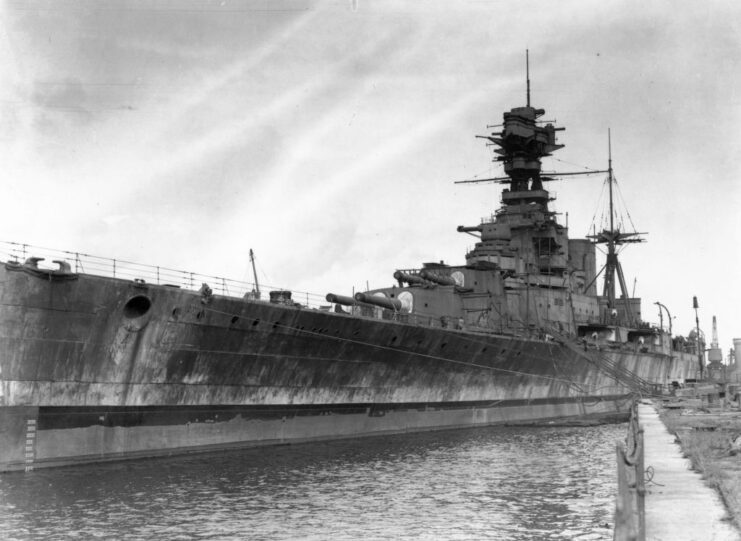
The HMS Hood was laid down in September 1916 at the John Brown & Company shipyard in Clydebank, Scotland, as a response to the growing naval arms race. A blend of ambition and necessity, the aim was to create a battlecruiser that could outmatch her rivals in both speed and firepower.
Hood was launched on August 22, 1918, and it was a spectacle that captured the imagination of a nation eager for security and pride on the high seas. Her completion, however, stretched into the interwar period, with the ship finally commissioned in May 1920.
This delay allowed for modifications to be made that were influenced by the lessons learned during World War I, making Hood not just a warship, but a testament to the evolution of naval warfare.
HMS Hood specs.
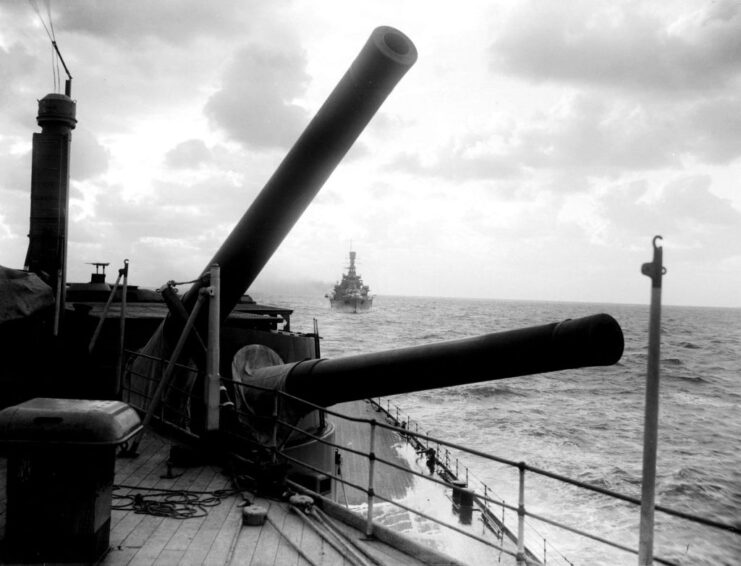
When discussing the HMS Hood, one must delve into the technical specifications that made her one of the most formidable vessels in military history. She boasted a length of 860.7 feet, making her the largest warship of her era. With a top speed of 37 MPH, thanks to 24 Yarrow boilers that fed four Parsons geared turbines, Hood could outpace most of her contemporaries.
The battlecruiser’s armament was equally impressive, comprising eight BL 15-inch Mk I guns distributed in four twin turrets. These were capable of launching shells over a distance of more than 30 km, providing Hood with a striking power that was unmatched. She also featured six 21-inch torpedo tubes, 12 Breech-Loading 5.5-inch Mk 1 guns and four Q 4-inch Mk V anti-aircraft guns.
Additionally, her defensive capabilities were bolstered by armor that was up to 12 inches thick in places, particularly around the belt and barbettes.
Pre-World War II service
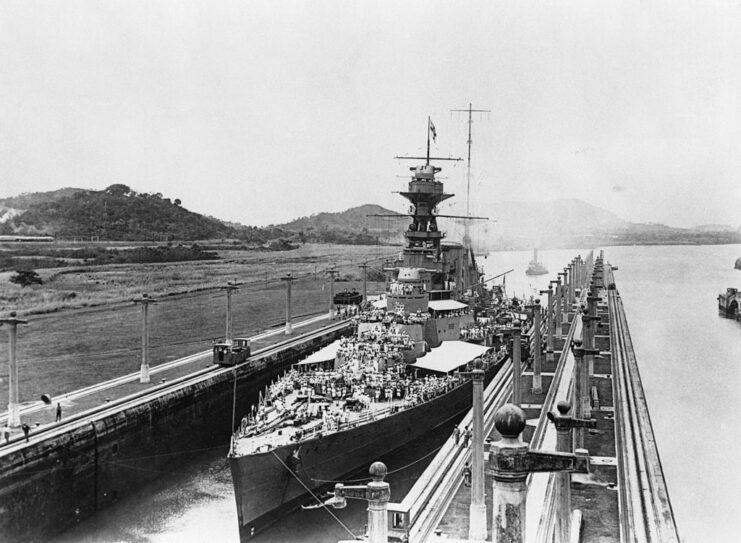
The HMS Hood‘s early years were marked by a show of force. She was involved in a series of friendly visits and fleet exercises as the flagship of the Battlecruiser Squadron of the Atlantic Fleet, which took her across the globe, from the Mediterranean to the waters of the West Indies. Her presence in these areas wasn’t just about demonstrating naval power; it was also about fostering goodwill and strengthening ties with Britain’s allies.
Between 1929-31, Hood underwent a refit, after which she continued her cruises. During the Spanish Civil War, she escorted three British merchantmen into Bilbao harbor, before undergoing yet another refit in 1937. While there were plans to modernize Hood in 1941, the outbreak of the Second World War meant this was impossible, given how important she was to the Royal Navy.
Battle of the Denmark Strait
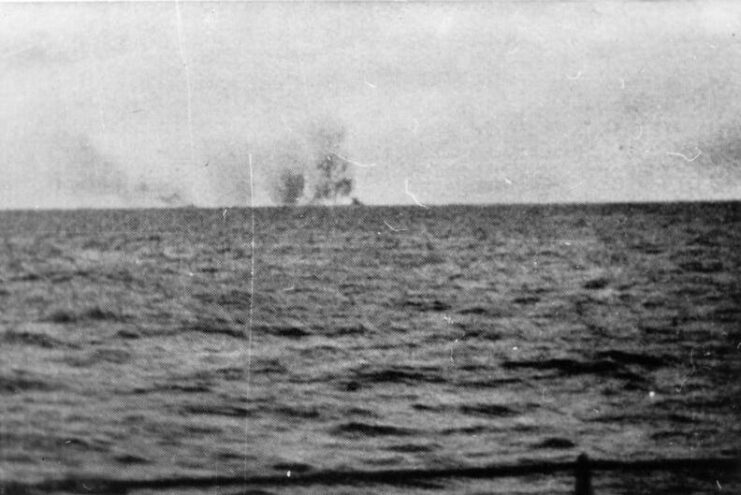
It was during World War II that the HMS Hood was truly put to the test. She was involved in several key operations early in the conflict, conducting patrols and safeguarding convoys. She suffered damage when a Junkers Ju 88 dropped a bomb on her and, by the early 1940s, she was in less than ideal condition, prompting a two-month refit.
Hood‘s true mettle was tested in the Battle of the Denmark Strait during Operation Rheinübung, which aimed to block Allied shipping to Britain. Leading the charge was the German battleship Bismarck, one of the most powerful ships operated by the Kriegsmarine. To prevent the enemy vessels from breaking out to the Atlantic, the battlecruiser and the HMS Prince of Wales (53) headed for the scene.
The two British vessels engaged Bismarck and the German heavy cruiser Prinz Eugen in a fierce battle that began at 5:52 AM on May 24, 1941. Hood attacked the former, prompting both enemy vessels to turn their fire toward the battlecruiser.
During the engagement, a shell from Bismarck struck Hood, igniting her aft ammunition magazines. The resulting explosion was catastrophic, breaking the ship in two and sending her into the depths of the North Atlantic within three minutes. Of the 1,418 crew members aboard the vessel, only three survived. With Hood lost and suffering her own damage, Prince of Wales was forced to retreat, but not before scoring three hits on Bismarck.
Exploring the Wreck of the HMS Hood
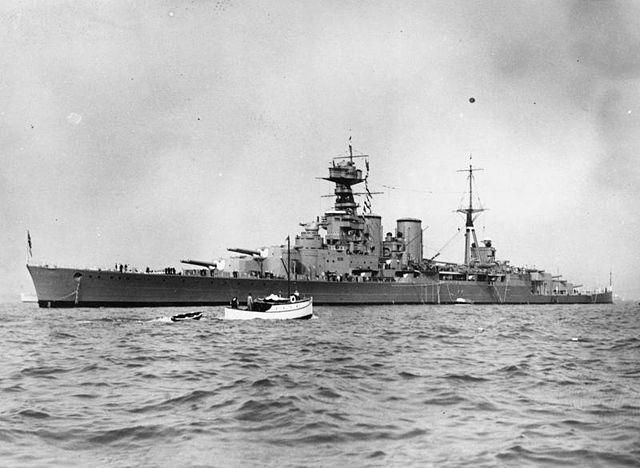
Explorations of the HMS Hood‘s wreck, spread between two debris fields, have brought to light fascinating insights into one of history’s most poignant naval tragedies. Recent expeditions have utilized advanced underwater technology to uncover important details; through high-resolution imagery and sonar mapping, researchers have been able to piece together the events that led to the ship’s loss.
One of the most significant events was the recovery of Hood‘s bell, which serves as a reminder of the battlecruiser’s proud legacy. The artifact has since been restored and now stands at the National Museum of the Royal Navy as a memorial to the bravery and sacrifice of Hood‘s crew.
More from us: USS Theodore Roosevelt (CVN-71): The ‘Rough Rider’ That’s Seen Continued Action In the Middle East
As for the wreck, it was designated a war grave by the British government in 2002, meaning it’s protected under the Protection of Military Remains Act.
